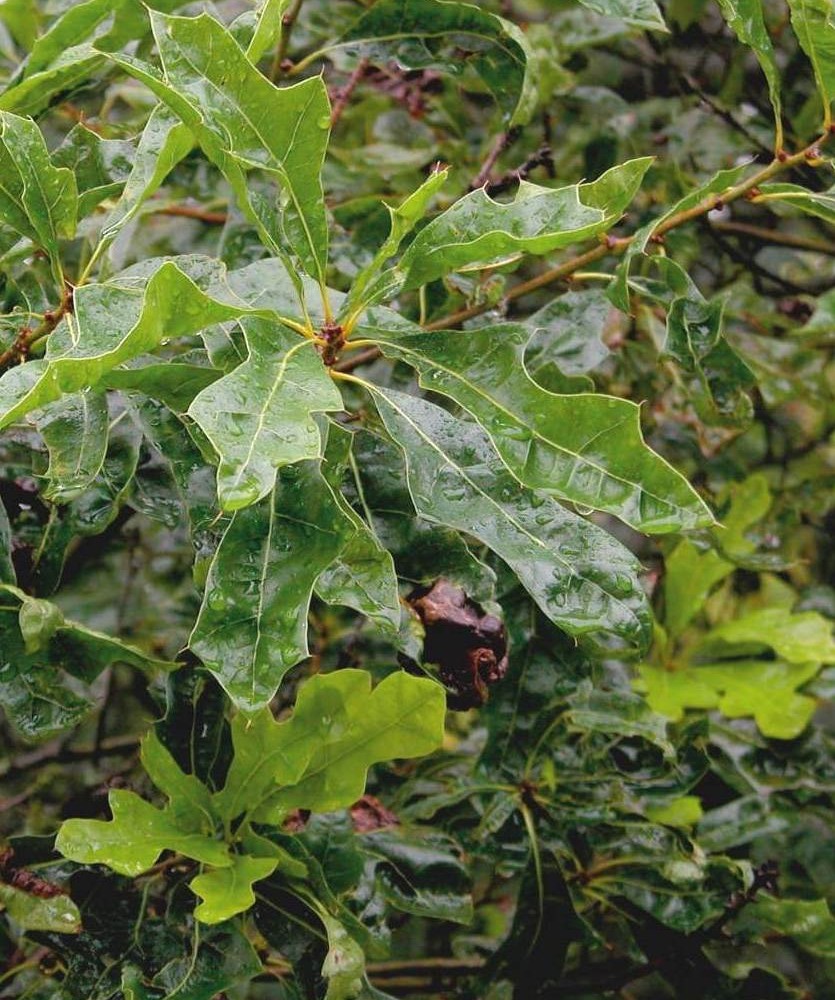Chisos oak
(Quercus canbyi)

Description
Quercus graciliformis (also known as the Chisos oak or slender oak) is a rare North American species of oak tree in the beech family. Quercus graciliformis is a deciduous tree up to 8 metres (26 ft) tall. Leaves are elliptical or lance-shaped with 8-10 shallow lobes. The acorns are produced biennially. The species has been found only in the Chisos Mountains, within Big Bend National Park of West Texas, and a few miles southeast into the state of Coahuila in northeast Mexico. It is threatened by habitat loss. It grows on dry, rocky canyon floors at elevations above 5,000 feet (1,500 m). An oak is a tree or shrub in the genus Quercus ("oak tree") of the beech family, Fagaceae. There are approximately 500 extant species of oaks. The common name "oak" also appears in the names of species in related genera, notably Lithocarpus (stone oaks), as well as in those of unrelated species such as Grevillea robusta (silky oaks) and the Casuarinaceae (she-oaks). The genus Quercus is native to the Northern Hemisphere, and includes deciduous and evergreen species extending from cool temperate to tropical latitudes in the Americas, Asia, Europe, and North Africa. North America has the largest number of oak species, with approximately 160 species in Mexico of which 109 are endemic and about 90 in the United States. The second greatest area of oak diversity is China, with approximately 100 species. Oaks have spirally arranged leaves, with lobate margins in many species; some have serrated leaves or entire leaves with smooth margins. Many deciduous species are marcescent, not dropping dead leaves until spring. In spring, a single oak tree produces both male flowers (in the form of catkins) and small female flowers, meaning that the trees are monoecious. The fruit is a nut called an acorn or oak nut borne in a cup-like structure known as a cupule; each acorn contains one seed (rarely two or three) and takes 6–18 months to mature, depending on their species. The acorns and leaves contain tannic acid, which helps to guard from fungi and insects. The live oaks are distinguished for being evergreen, but are not actually a distinct group and instead are dispersed across the genus. Linnaeus described only five species of oak from eastern North America, based on general leaf form. These were white oak (Quercus alba), chestnut oak (Q. montana), red oak (Q. rubra), willow oak (Q. phellos), and water oak (Q. nigra).
Taxonomic tree:







